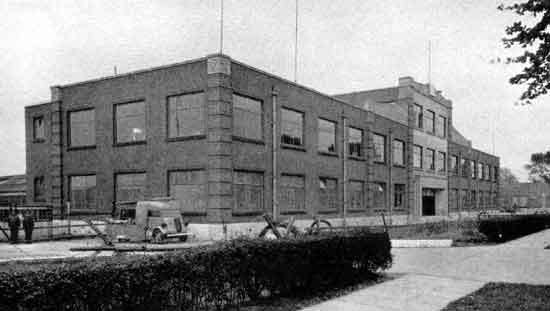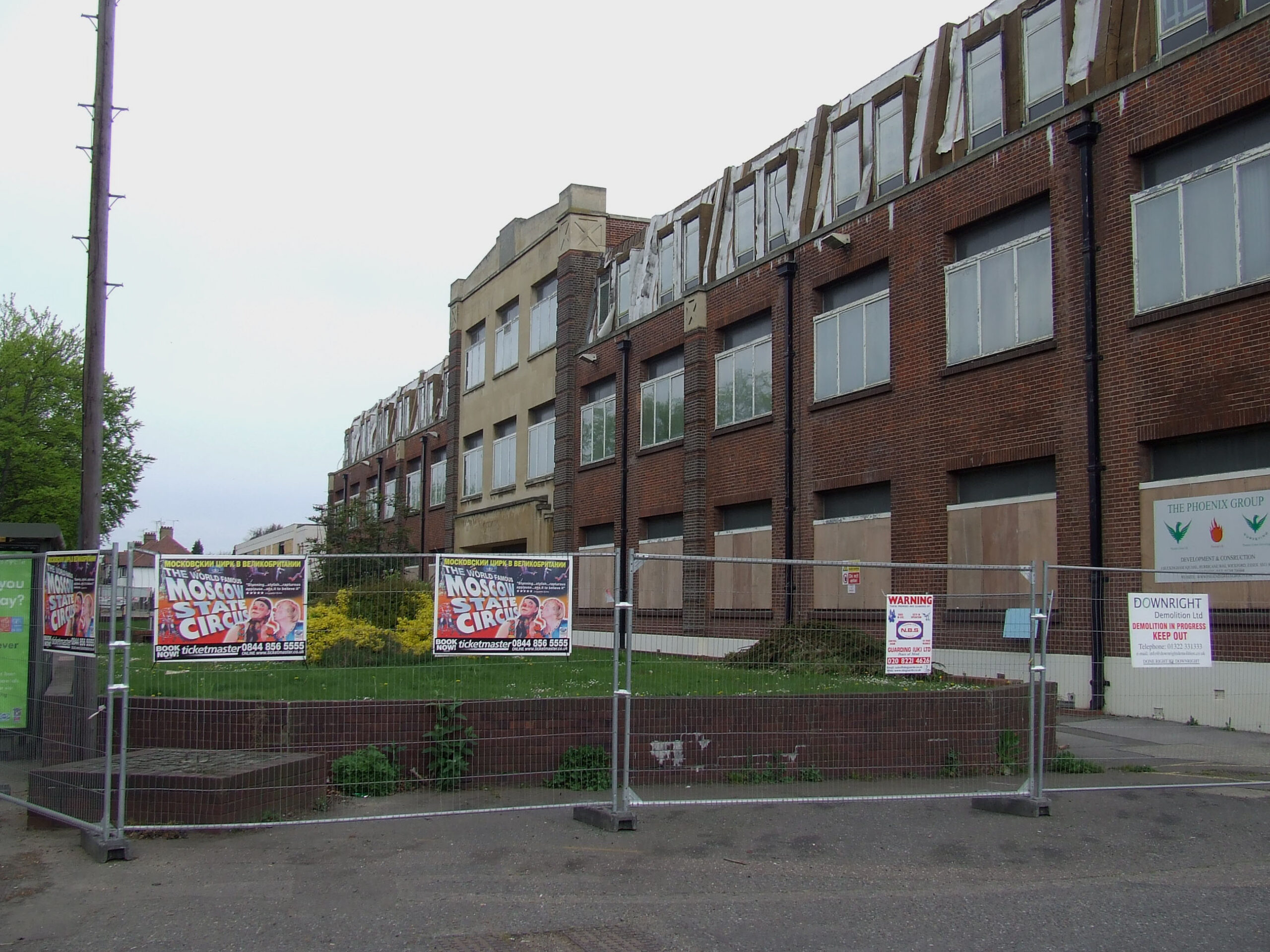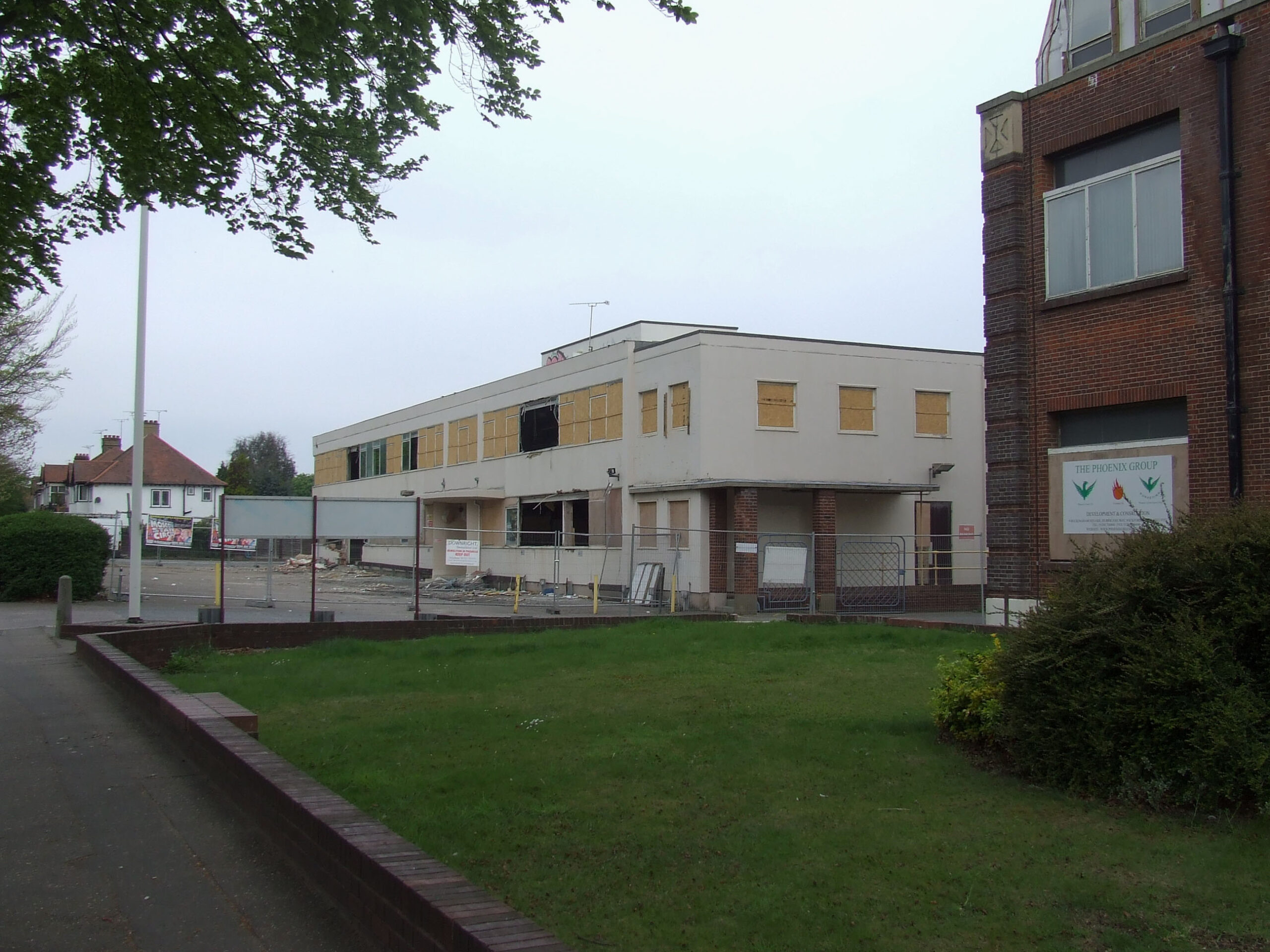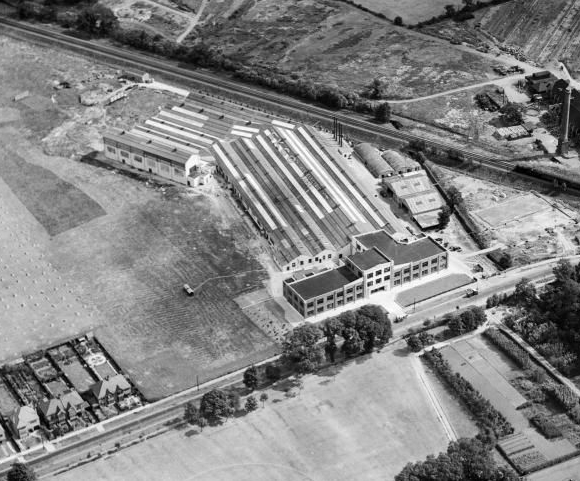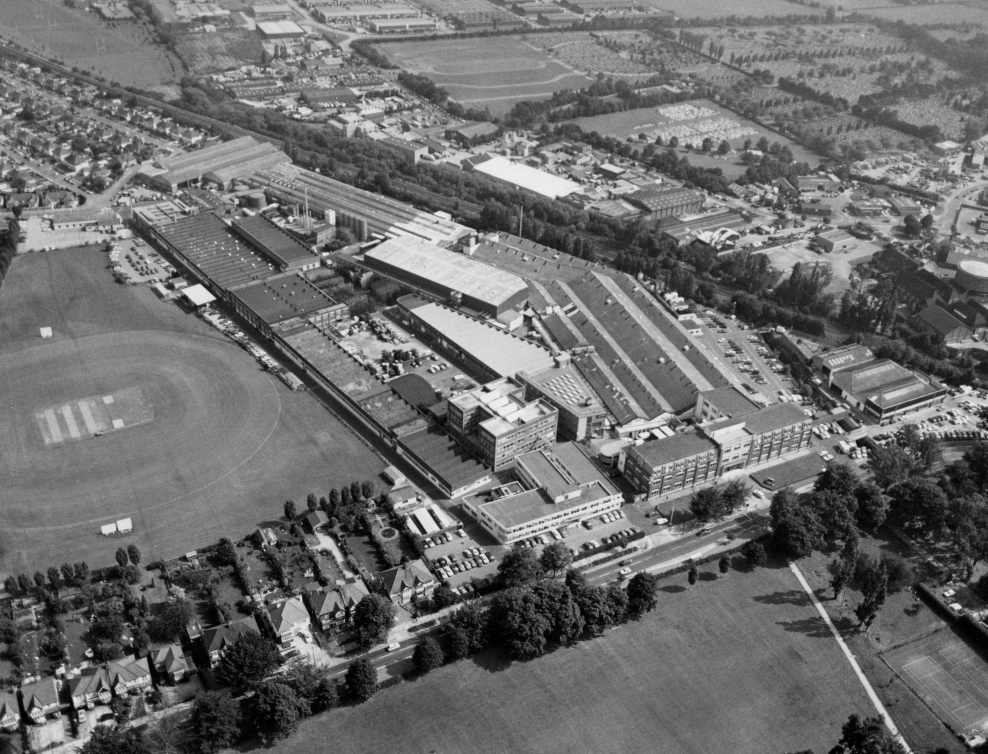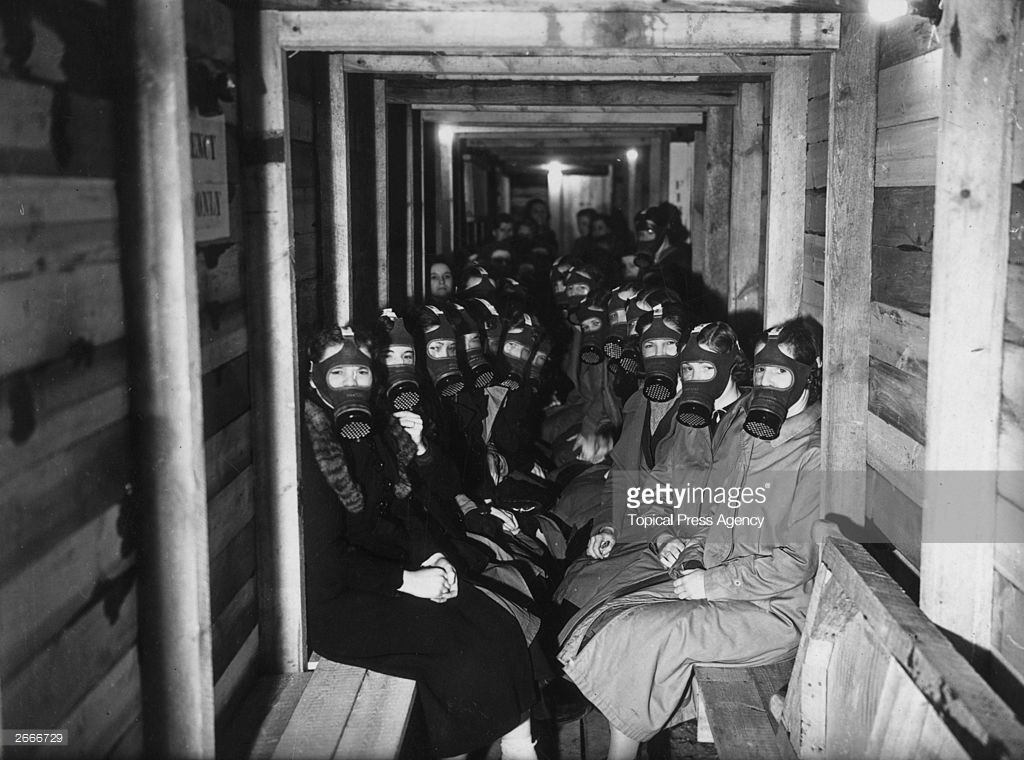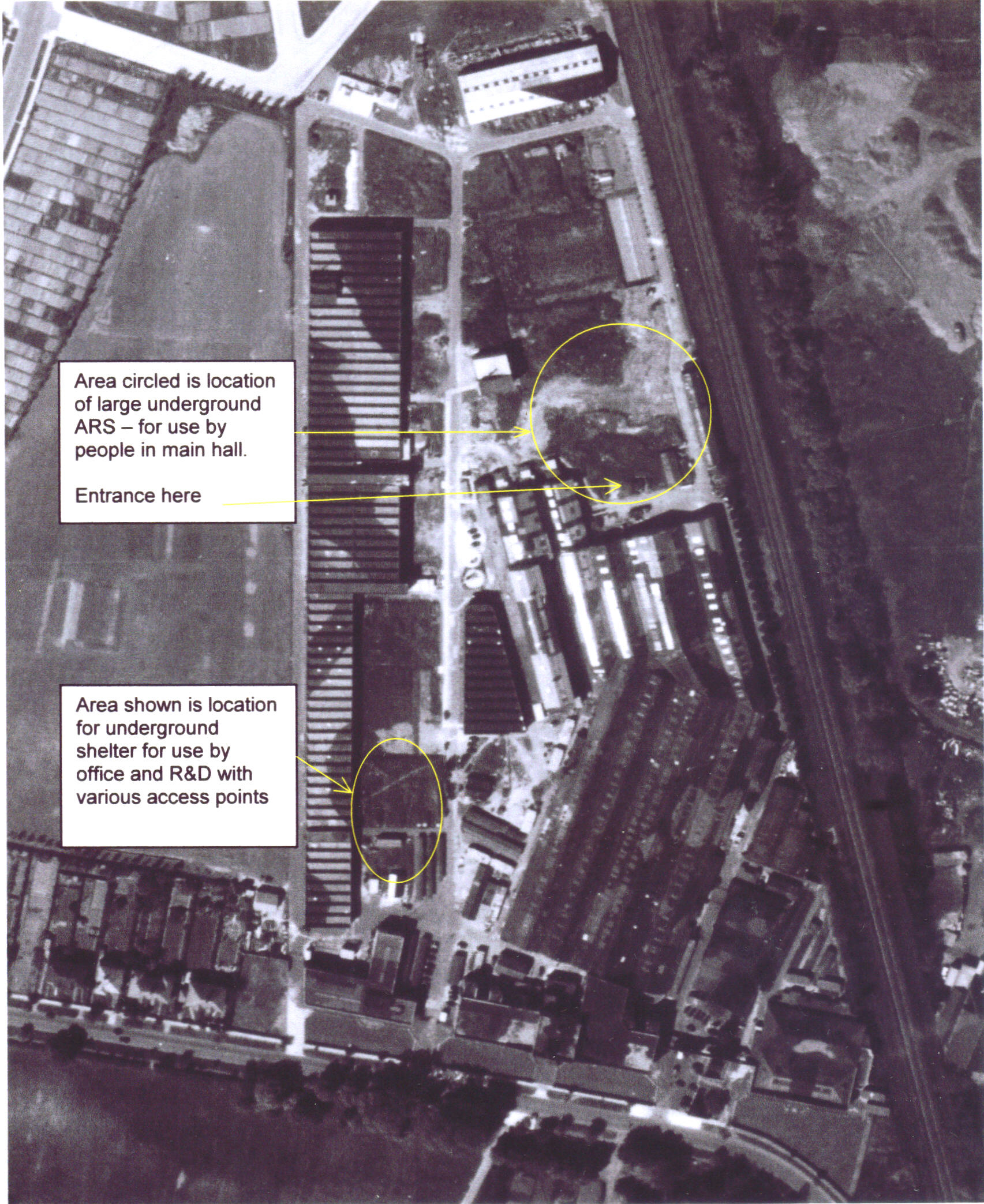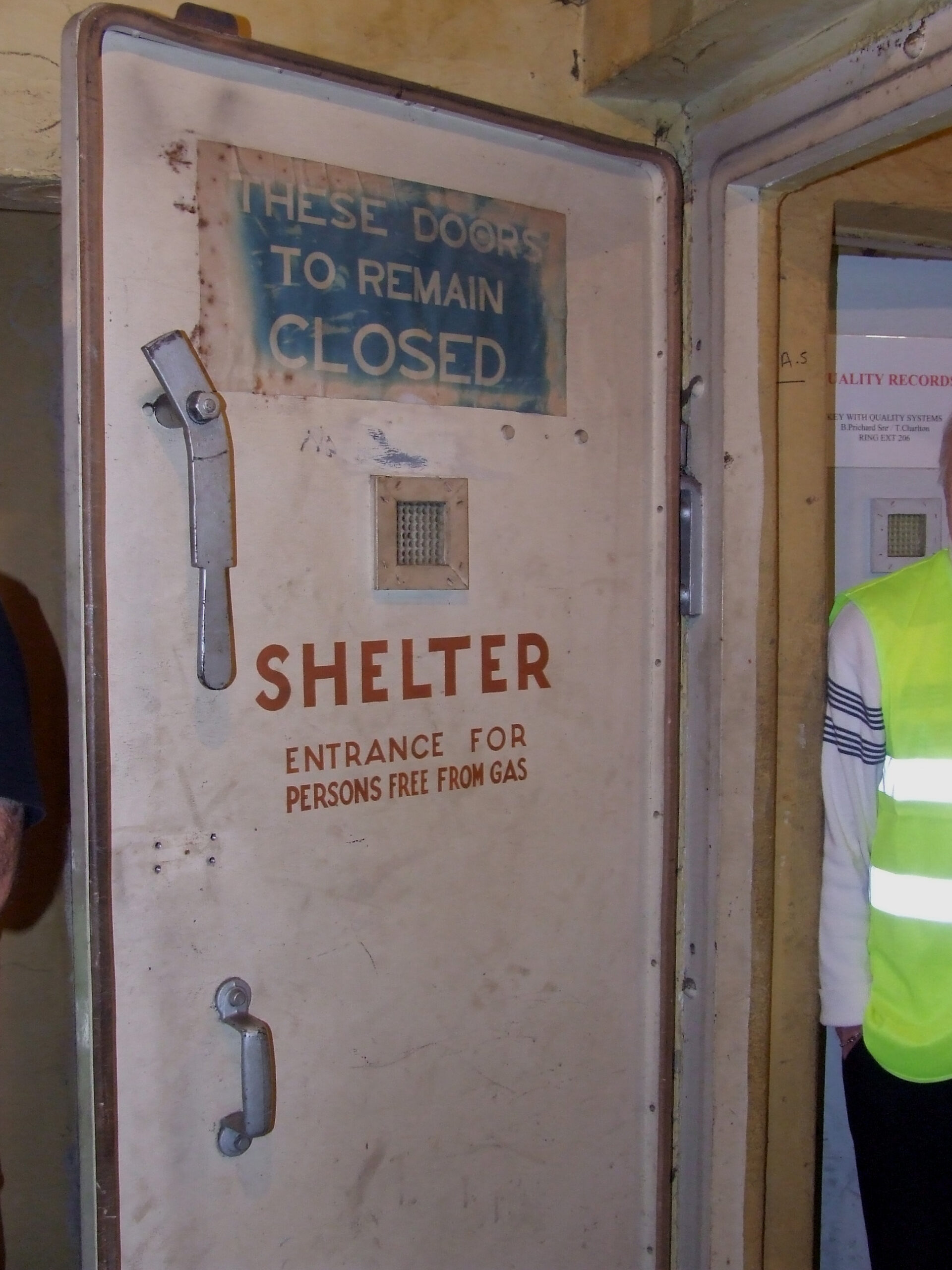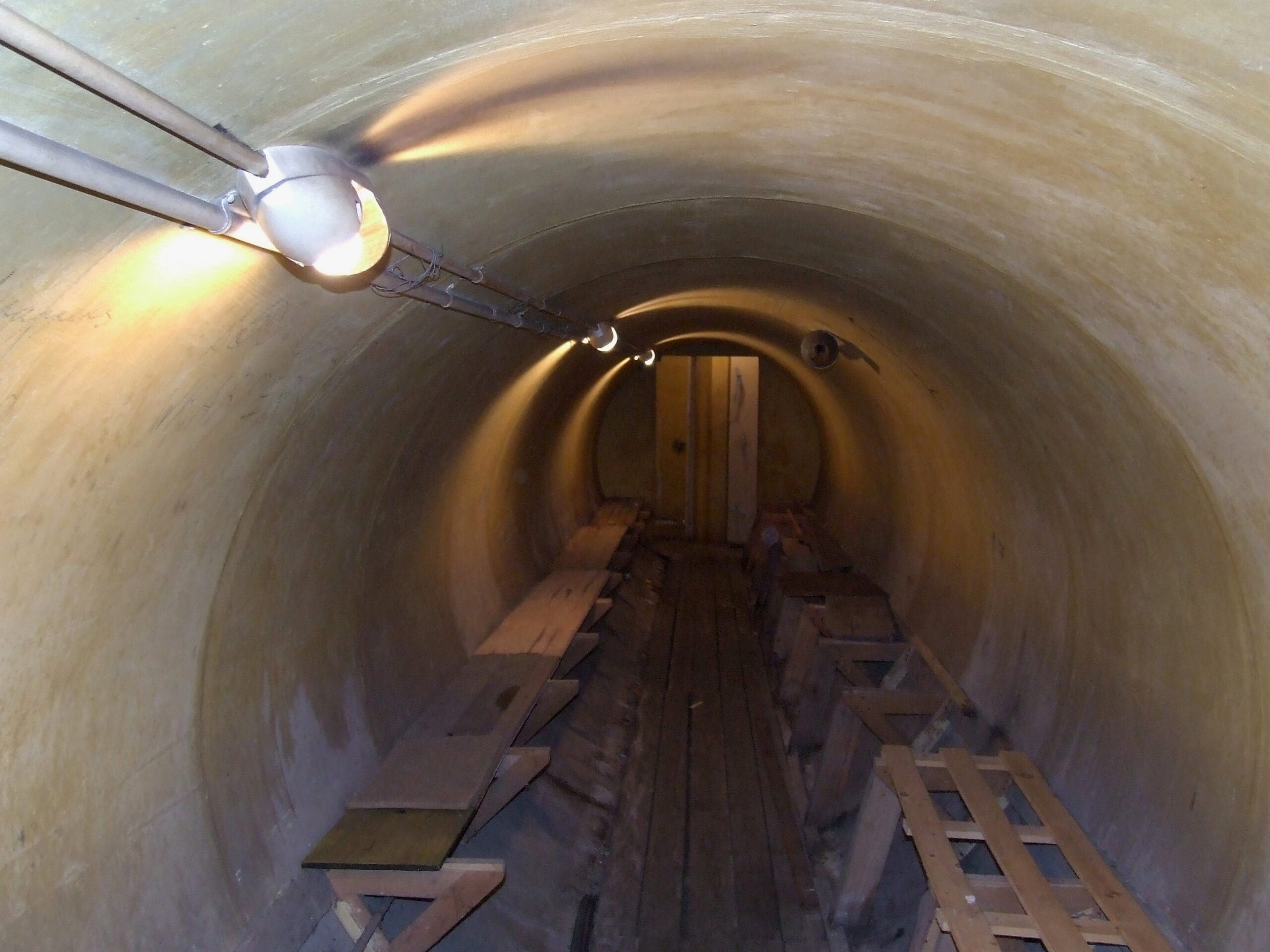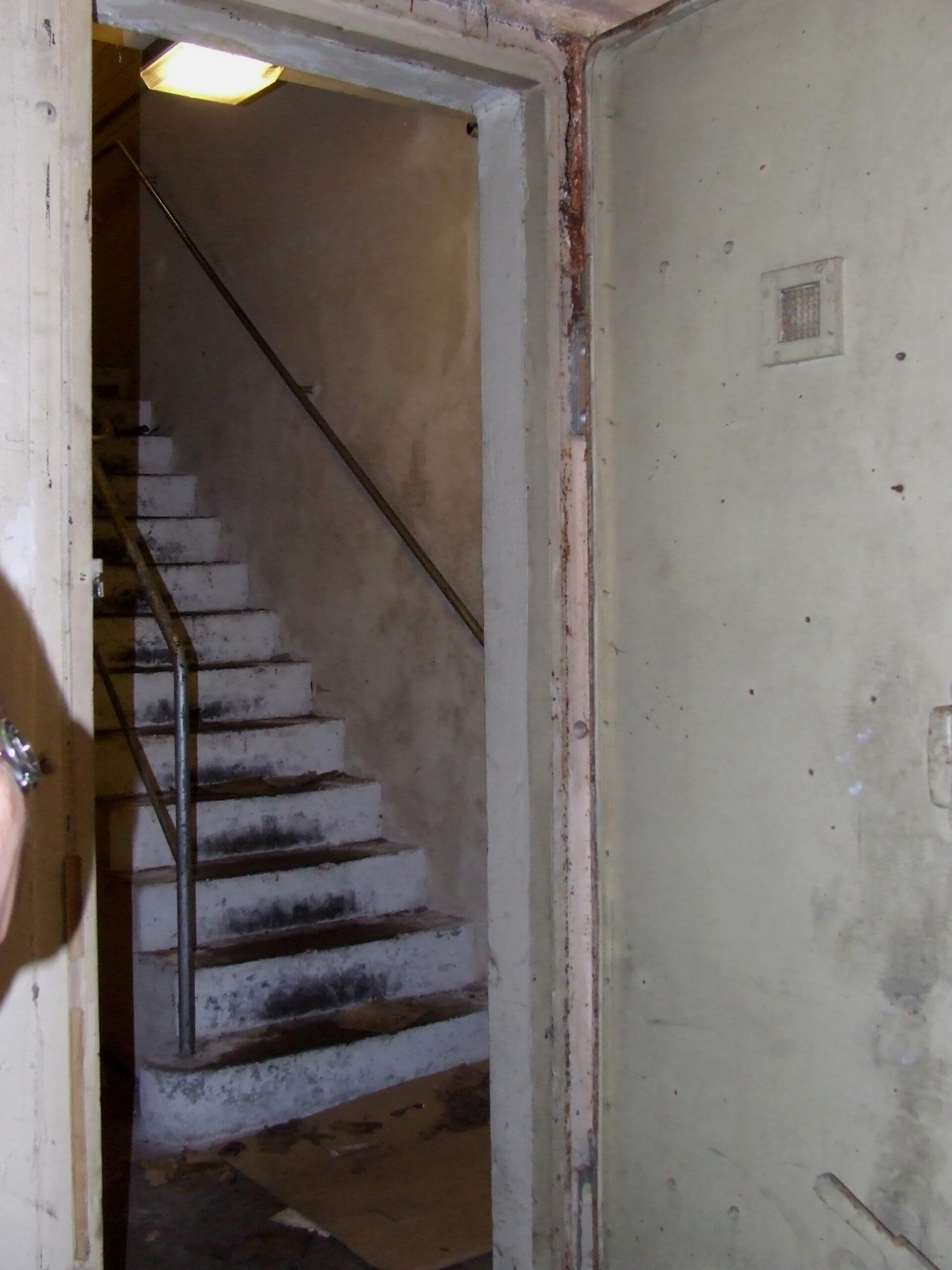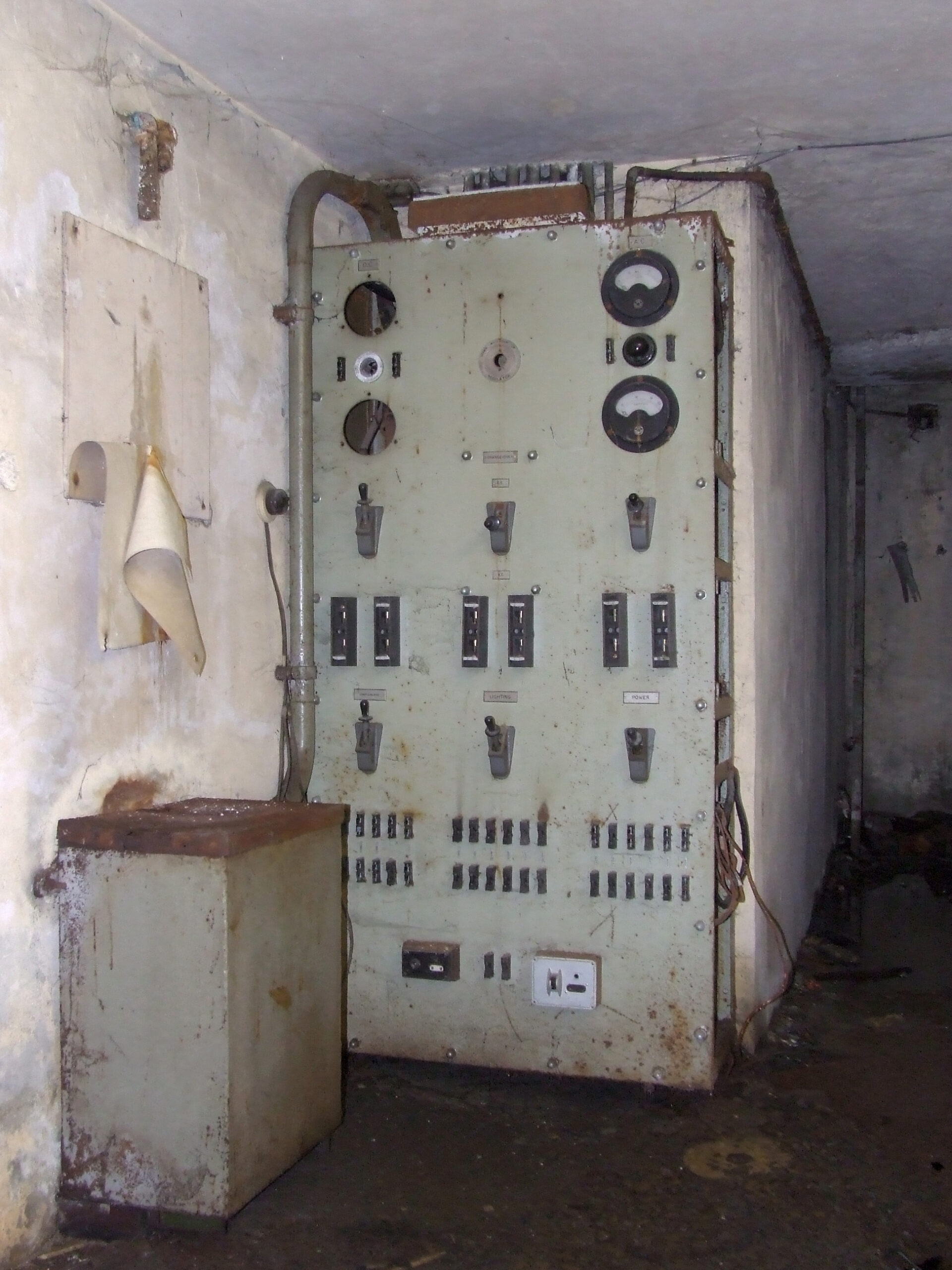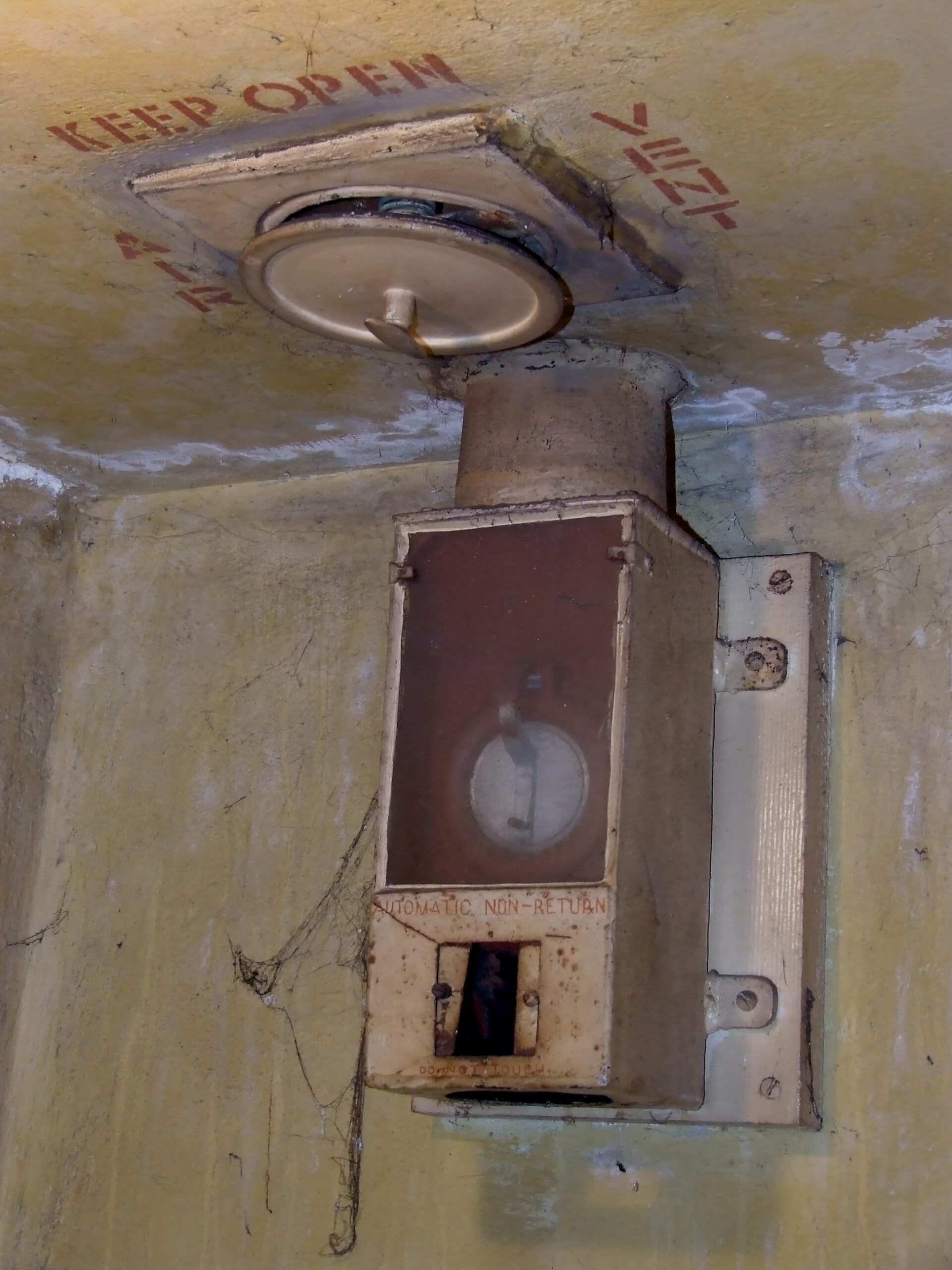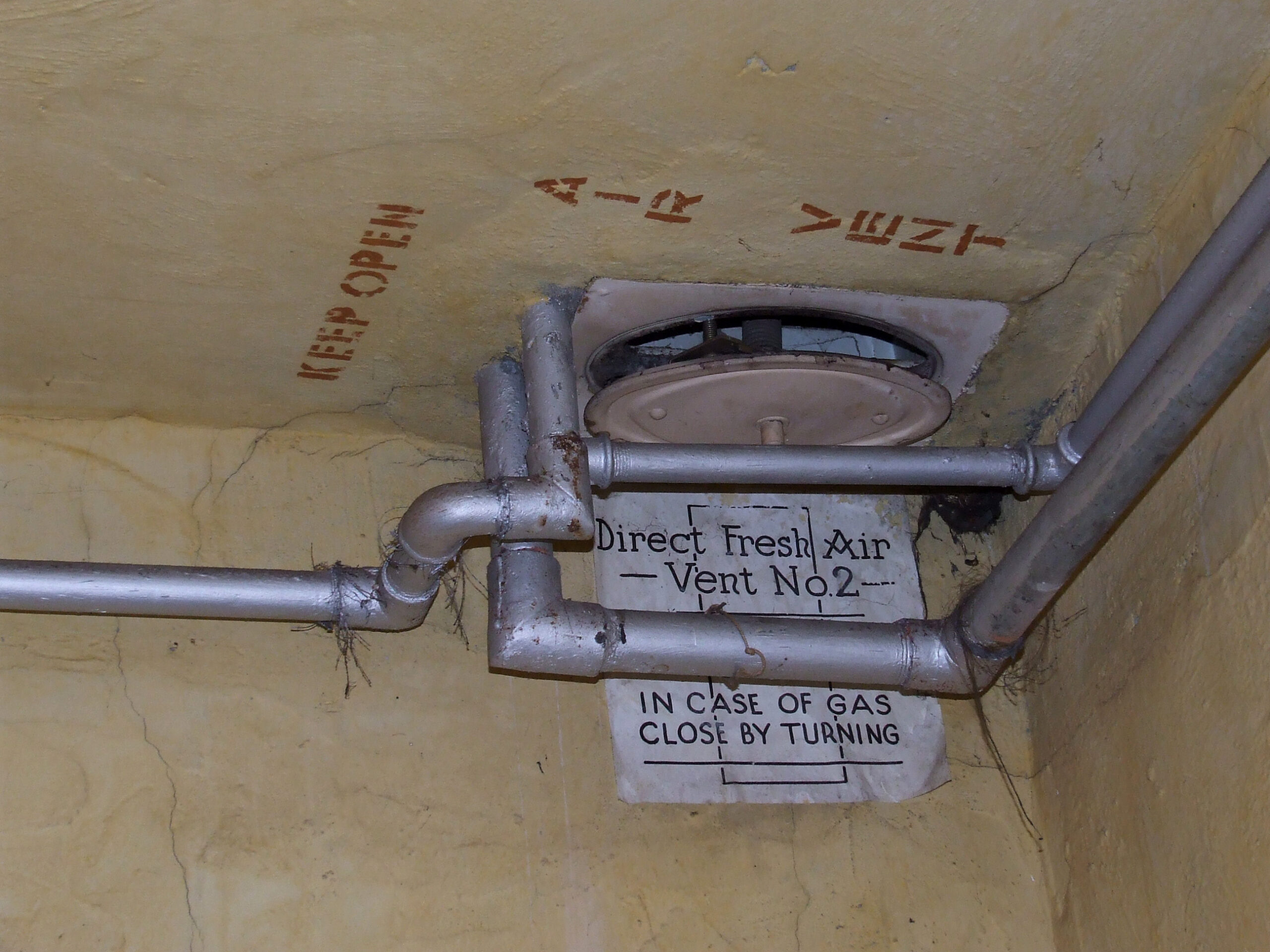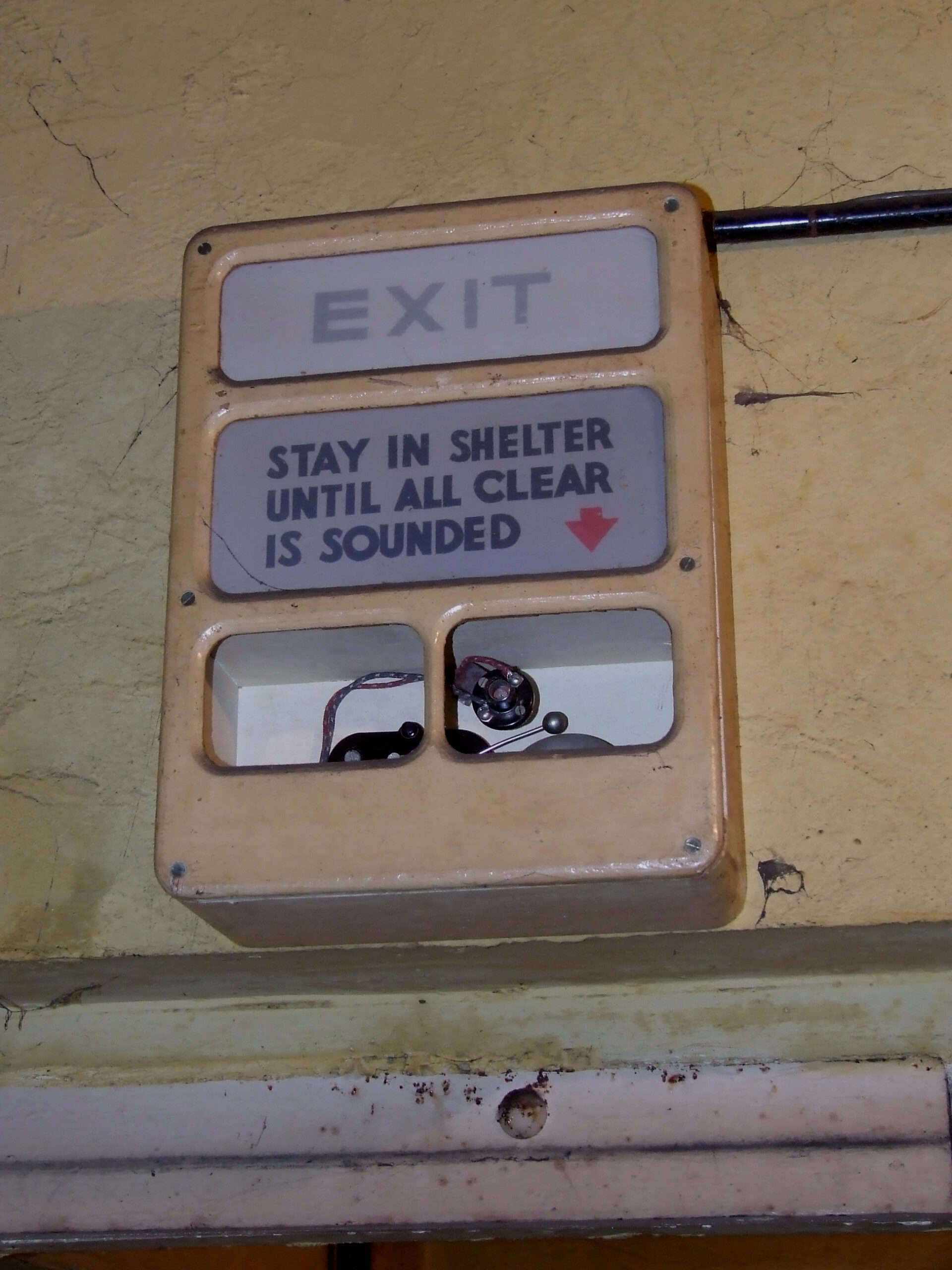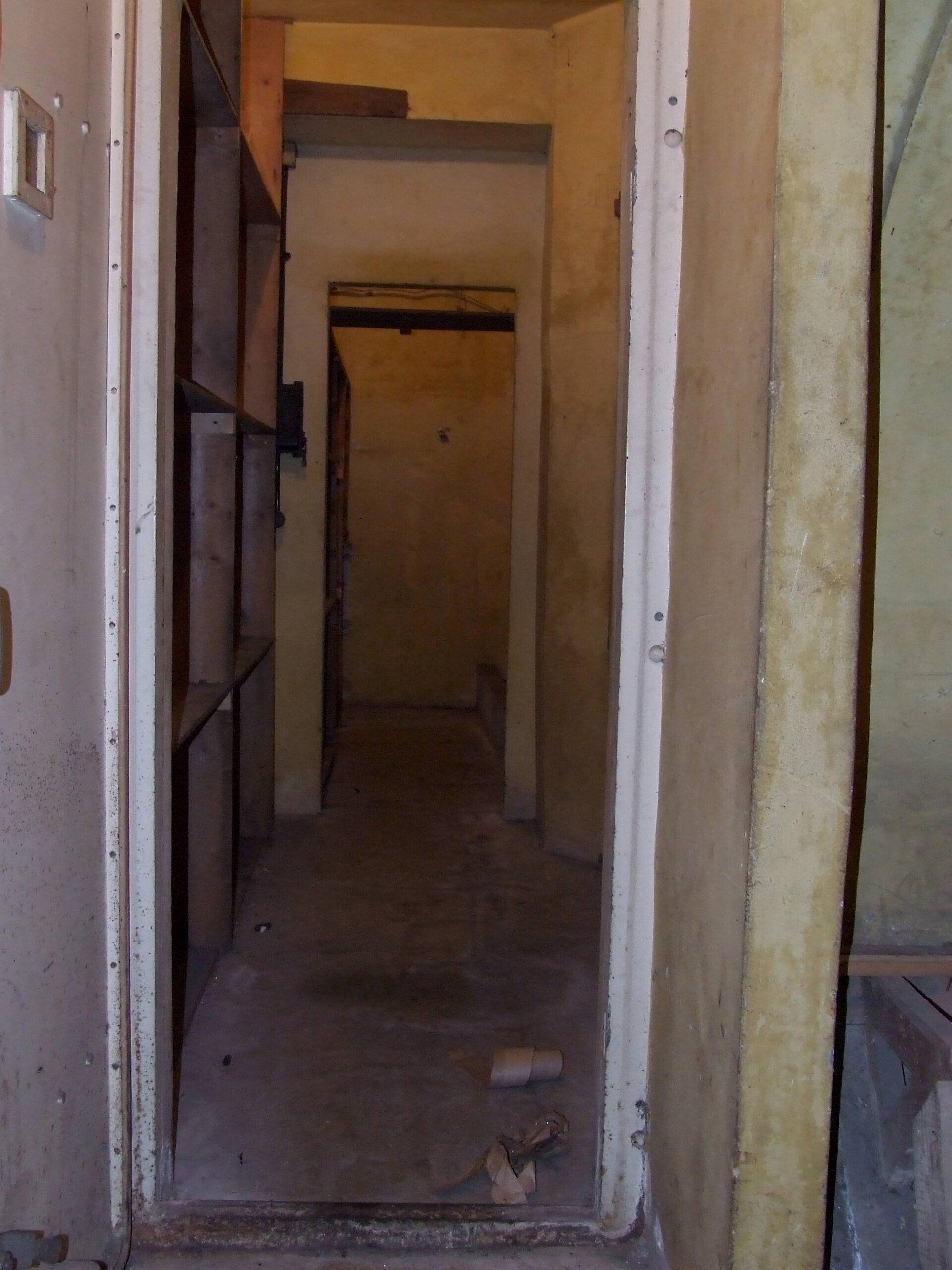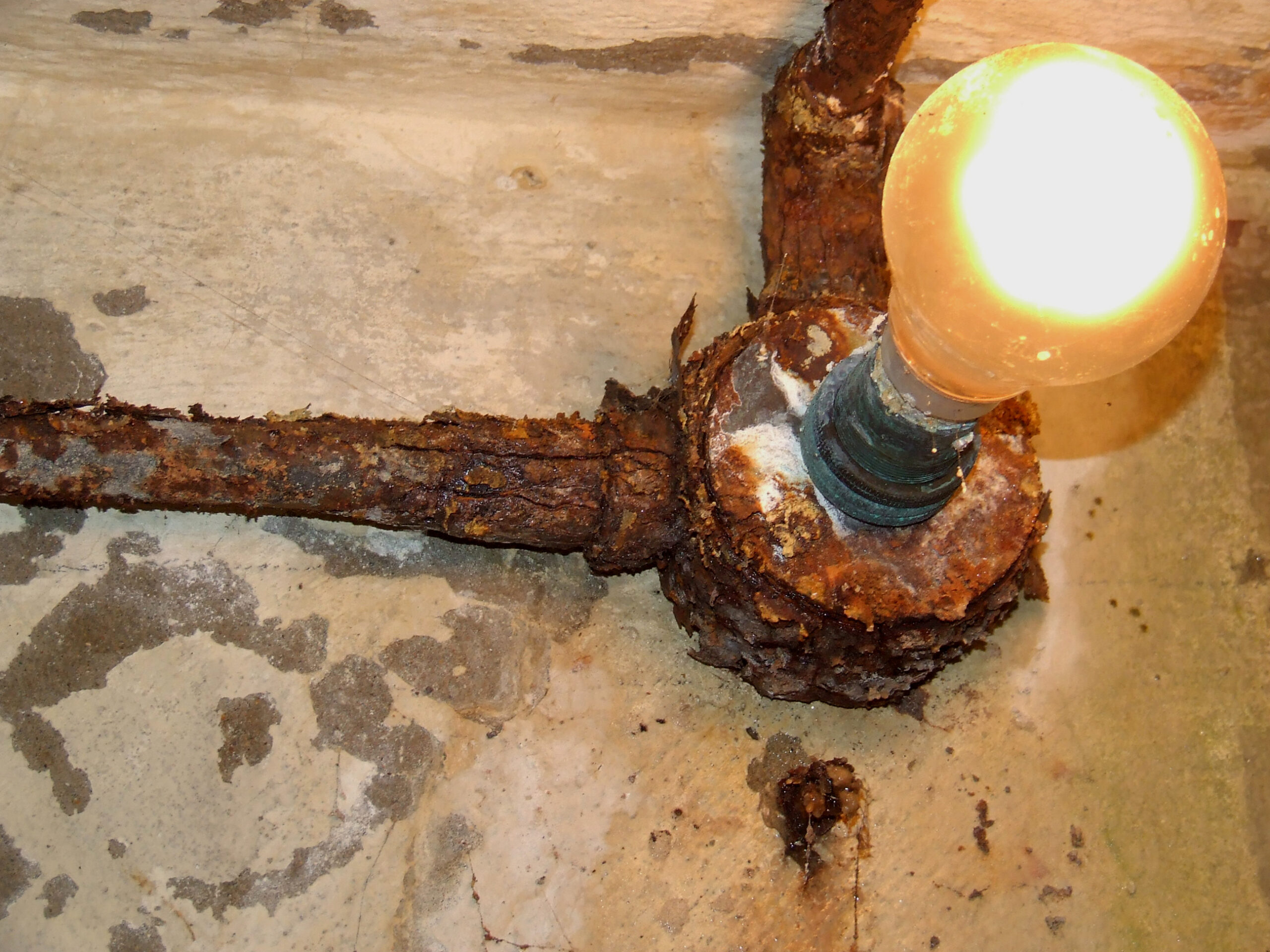Top: EKCO Southend premises c.1940 & 2008 Bottom: Aerial view of the site in 1934 & 1970s
Priory Crescent was until recently home to a vast factory complex constructed by the locally-founded EKCO electronics company. In 2008 it was demolished after several decades of switching hands, and now a modern housing estate is nearing completion on the site. Not only was the site notable for its relation to local industry, but it also featured art-deco architecture and a network of air-raid shelter tunnels constructed pre-emptively as the Second World War drew near. We got in touch with local military historian and author Peter C. Brown who was fortunate enough to arrange several rare visits to the shelters in their final days before they were sealed. You can read about the shelter tunnels and see the unique photographs that he gathered of them below.
What was EKCO?
EKCO produced radio and television sets between 1924 and 1960, expanding into Ekco Plastics which produced assorted household products from cups to toilet seats, as well as radio casings themselves. The company was founded by Prittlewell resident Eric Kirkham Cole from where its name derives. Cole saw a niche in the market when he saw a newspaper advert asking if it was possible to power a radio via the mains rather than with batteries. For this purpose, Cole developed a battery eliminator and his business grew from there. EKCO first had a 1927 factory in Leigh-on-Sea, although this moved to its larger long-standing site in Southend at Priory Crescent in 1930. Originally, the EKCO radios were housed in bakelite cabinets imported from Germany. However, import duties rose in 1931 and hence EKCO developed its own bakelite moulding workshop at its Southend premises. This later developed into EKCO Plastics.
In World War Two, all but the bakelite moulding shop was evacuated because the large moulding pressed could not be moved easily. The empty factory was re-tooled for the production of wiring ‘looms’ (circuitry) for Avro Lancaster bombers. Being in close proximity to Rochford Airfield (now Southend Airport), two anti-aircraft Lewis guns were placed on the roof of the factory to defend against low aerial attack, although these were removed rapidly after use revealed they interfered with each other’s fire. Workers at the EKCO factory also formed their own proficient Home Guard companies, ARP services, and fire brigades, whom trained at night whilst working at day. Post-war, EKCO expanded the diversity of its products into car radios, televisions, tape recorders, electric heaters, and other plastic products. In 1960, Ekco merged with Pye Electronics to form British Electrical Industries Ltd. Eventually the business waned and abandoned the Southend site in 1966, following the death of Eric Cole in 1965. The main Southend factory was sold to Philips Electronics 1967 until c.1970. Access credit cards took over the site in its final incarnation from around 1972 until 1989, when the site was left empty for many years until its demolition in 2008.
The Southend premises, inside the air raid shelters during wartime, and location of the shelters
The EKCO Air Raid Shelter Tunnels
At the onset of the Second World War, the EKCO lamp factory was excavated and rebuilt to incorporate several bomb and gas-proof air-raid shelters. These survived up until the factory’s demolition in 2008 by Downright Demolition, and possibly still remain somewhere long-sealed underground beneath the new housing estate built on the site. We got in touch with local author and military hitorian Peter C. Brown who managed to research and look around the tunnels during the demolition of the EKCO site before they were sealed. He managed to arrange this visit with EKCO ‘archivist’ Chris Poole (who produced the featured shelter plan) and Downright Demolition’s Works Foreman Ron Edwards. Peter Brown visited the site numerous times over a five-month stint to ensure these tunnels were fully-documented before they became lost to time. He filmed the tunnels although this footage went to Essex County Council and Southend Museums who used this for a DVD and did not give permission for them to be posted online. A team from Braintree’s Archaeological Department also got involved to survey and make video recordings of the tunnels. Peter has provided the excellent information, photographs, and plans displayed in this article.
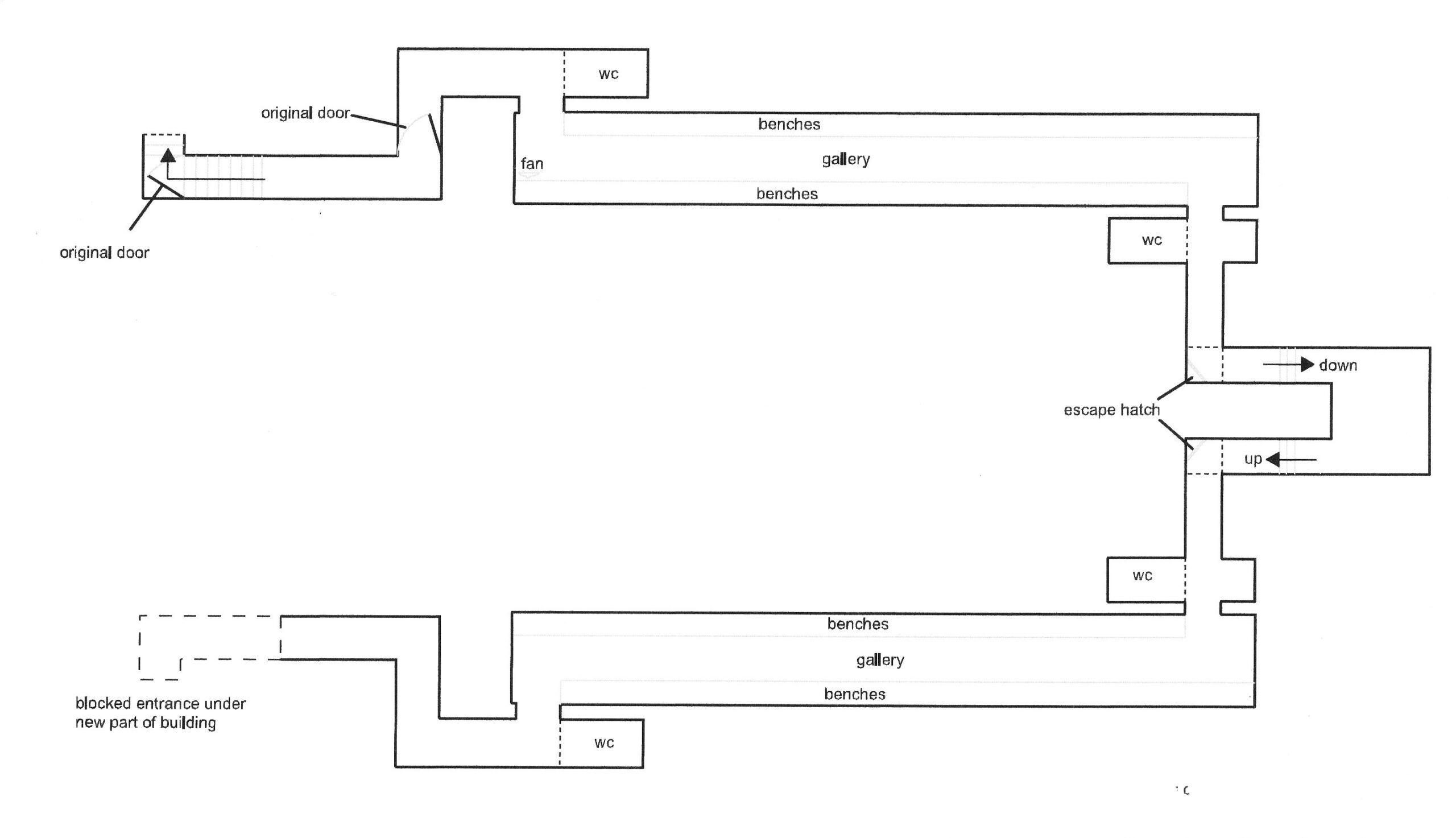
Chris Poole’s plan of the factory shelter designed to protect workers
These shelter tunnels were unusual in that they consisted of two-metre diameter concrete pipes; usually used for underground waterworks, set into the trenches dug for them. The extensive system was completed by April 1939. The main shelter under the factory was designed to protect key personnel at the offices. Concrete steps led down to the shelters, protected by heavy steel blast doors and gas-sealed doors. The main shelter was divided into three sections called galleries which were separated by blast walls and doors to isolate any explosive damage done. Each gallery had two ‘Elsan’ chemical toilets and a water supply. The central gallery had a separate power room containing a diesel engine driving a dynamo and air pump, pumping air around the shelter via outlet pipes which had valves designed to prevent air contaminated by gas from entering the shelter. Incase mains power failed in the shelters, an emergency DC power supply from the diesel generator could be used to light the shelters from a power distribution panel. The shelter entrance had a gas decontamination station to wash contaminated entrants, and a first aid room at the base of the north entrance. To let people inside know when an air raid was over, an illuminated sign was fitted which would change from red to green to give the all clear, alongside a bell that would ring. Two more simple shelters were constructed at the same time with basic facilities to protect the factory’s workers.
Sources: Many thanks to Peter C. Brown for providing the information and 2008 photographs used.

